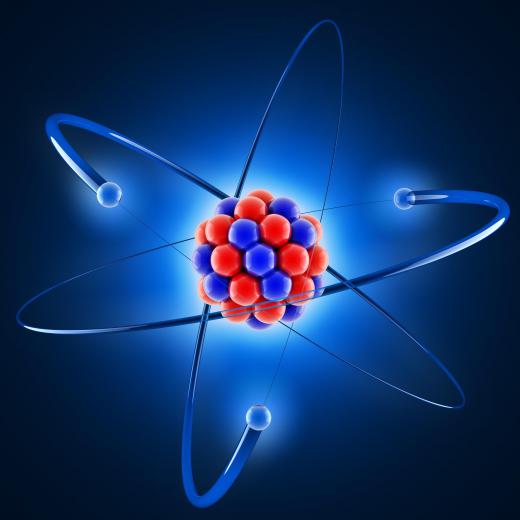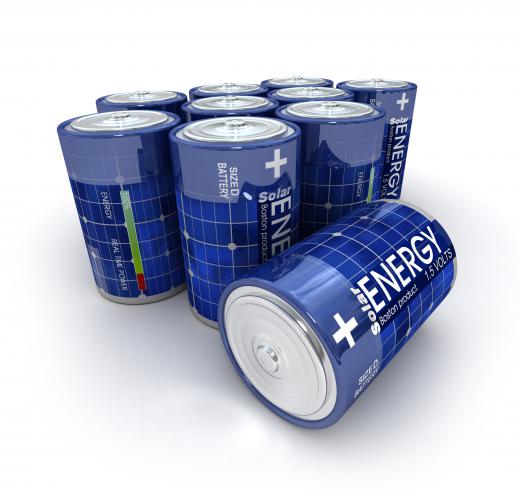What is a Negative Charge?
A negative charge is an electrical property of a particle at the subatomic scale. Physically, it maintains the inverse reaction to positively charged particles, creating a electromagnetic field that demonstrates a certain level of force, keeping both particles in a united and reactive state. The most prevalent example can be found within electrons, which maintain an electromagnetic field with the positively-charged protons. Both these elements are essential to maintaining the integrity of atoms. As such, negative charges are part of the fundamental forces of physics law.
When two negative charges meet, a force known as repulsion is exerted, causing both particles to push away from one another. Inversely, negative and positive charges attract, which is known as Coulomb's law. These two principle properties of charges make up the general basis for the laws of electrodynamics. Certain particles, such as photons, can have a different effect on negative charges, however, causing different reactions to occur. This change in the laws of electrodynamics is the basis for quantum theory, the study of anomalies within the principles of physics.

Electrons are highly prevalent within the universe and contain no substructures. Smaller than protons, their mass is only 1/1836 of their positively-charged counterparts. They are essential to the activity of magnetism, electricity, and the causes of thermal conductivity. Electrons are also responsible for chemical bonding between elements. This occurs when an electron is shared by an atom or exchanged through the chemical process.

It is believed by many scientists that the negative charge found within electrons was established during the Big Bang. Electrons were created in the massive explosion and took their place among other Fermions, or physical forms of particles. Also created at the time was the positron, the antiparticle of the electron. Unlike electrons, however, the charge of a positron is not negative. This means that when collisions occur between the two particles, both are annihilated, creating gamma ray photons in their place.

Negative charges were first identified by the ancient Greeks. In approximately 600 BC, Thales of Miletus rubbed fur on amber, creating attractive forces. A number of scientists worked through the centuries to identify different forms of electromagnetic interaction, eventually settling on a system that defined different reasons for attraction and repulsion based on materials. In 1839, Michael Faraday identified the existence of different polarities. He defined one of these polarities as maintaining a negative charge, although the distinction between positive and negative charges was purely arbitrary.
AS FEATURED ON:
AS FEATURED ON:














Discussion Comments
@Glasshouse- I thought it would be a good idea for you to have the rest of the solubility rules. These remaining rules are based on positive and negative charge of different compounds, and some of the exceptions pertain to negatively charged ions and ionic compounds.
All compounds containing silver (AG+) are insoluble except for silver nitrate. Lastly, any compounds that contain sodium, potassium, and ammonium ions are soluble. You could have deduced these from the solubility rules that Babalaas provided, but it is a little more helpful if you are given these rules rather than needing to discover them yourself.
I am surprised that you have not found these rules in your chemistry textbook. I would recommend checking the appendix of your text. The appendix often includes important, but hard to remember things like solubility rules or molarities of concentrated acids and bases.
@glasshouse- I remember the days of chemistry and solubility. I actually remember the solubility rules very well so I can help you out and give you all of the solubility rules for negative charge atoms and ionic compounds.
All sulfate ions (SO4^2-) are soluble in solution except for the following: lead sulfate, barium sulfate, strontium sulfate, calcium sulfate, mercury sulfate, and silver sulfate. Silver sulfate is only partially soluble and should precipitate, then turn back to solution once excess solution is added.
any compound that contains the ionic compound nitrate (NO3^-) is completely soluble in solution. Any compound containing a hydroxide (OH^-) is insoluble in solution except sodium hydroxide, potassium hydroxide, ammonia compounds, barium hydroxide, and calcium hydroxide. The negatively charged ionic compound chromate (CrO4^2-) is insoluble unless it contains potassium, sodium, ammonium, magnesium, calcium, aluminum(III)an nickel cations.
Carbonate, Phosphate, sulfate, and silicate ionic compounds are insoluble unless they contain potassium, sodium, and ammonium compounds. Most sulfides are insoluble in solution unless they contain group IA, Group IIA, and ammonium ions. Finally, Chloride, Bromide, and Iodide solutions are soluble unless they contain silver, mercury, and lead.
How do I know what negative ions and ionic compounds are soluble in solution? I have to write a lab report for a chemistry lab I completed on identifying cations. I do not really understand this section on solubility. I need to explain why different cations form precipitates in solution and some are completely soluble. Can anyone help me out?
Post your comments